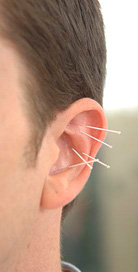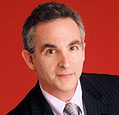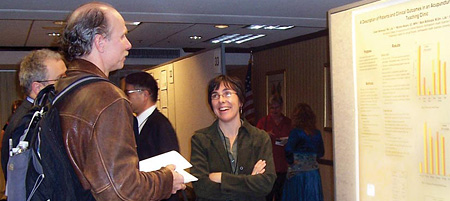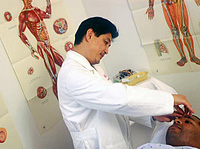Meeting Marks 10th Anniversary of NIH Acupuncture Conference

© Bob Stockfield
Just over 10 years ago, an NIH Consensus Development Conference assessed acupuncture's effectiveness in treating various diseases and conditions. What has happened in the field of acupuncture research since that conference and its later report (called a consensus statement)? What areas will be important in future research?
These were among the key questions that speakers and audiences addressed at a special annual meeting of the Society for Acupuncture Research. "The Status and Future of Acupuncture Research: 10 Years Post-NIH Consensus Conference" took place November 8–11, 2007, in Baltimore. The society cosponsored the meeting with the University of Maryland Center for Integrative Medicine, and NCCAM provided grant support. The conference drew more than 300 practitioners, scientists, students, and other attendees from eight countries, who discussed acupuncture research in both general and disorder-specific contexts.

Richard L. Nahin, Ph.D., M.P.H.
"Clinical trials and studies on mechanisms should help bring important information on acupuncture and how it works to the public, health care providers, and policymakers."
— Dr. Richard Nahin
An NCCAM Background
Richard L. Nahin, Ph.D., M.P.H., Senior Advisor for Scientific Coordination and Outreach at NCCAM and a member of the planning committee for the 1997 conference, gave the opening keynote lecture on 10 years of NIH-funded acupuncture research. Presenting many analyses of data on NCCAM's and NIH's support of such projects, he said that since 1997, "the breadth and depth of NIH-supported acupuncture research have greatly expanded…. The quality of clinical trials has increased, as has the presence of acupuncturists—especially licensed acupuncturists—on NIH-funded research teams. Mechanistic studies and moderate-sized trials are laying the groundwork for more definitive phase III trials."
Dr. Nahin continued that while the 1997 conference appears to have had a high impact on areas outlined in the 1997 statement, and may have positively impacted acupuncture's growth in the United States, it was "one step in a long journey…. Research has led to considerable progress. We have seen the emergence of correlations between acupuncture and effects on mechanisms in the body—for example, in data from imaging studies. A number of large, pivotal clinical trials have either been completed or are nearing completion, and more are in the planning stages." This should lead, he said, to important information about acupuncture and how it works becoming available to the public, health care providers, and policymakers.

Jeffrey Winsauer, Ph.D., O.M.D., L.Ac., of the Mayo Clinic, talks to poster author Eileen McKenzie, R.N., L.Ac., of the Minnesota College of Acupuncture and Oriental Medicine.
© Corporate Meetings Unlimited
Looking Forward in the Research Endeavor
Some of the major points that attendees made about the state of the research and future directions were as follows:
- The quantity and quality of studies have increased since 1997. So have the range of conditions for which acupuncture has been studied and the models and outcome measures used. Although some clinical trials on acupuncture's effectiveness in treating specific conditions have had positive results, findings have largely been mixed or inconclusive. This may be due at least in part to challenges in designing acupuncture studies—for example, in devising appropriate controls and blinding.
- Some clinical trials that found no difference between acupuncture and a placebo control (i.e., a "sham" procedure designed to look like acupuncture but not to deliver treatment effects) nevertheless found more benefit in acupuncture than in conventional drug treatment.
- Preclinical, basic-science studies continue to show that the effect of acupuncture has a physiological basis.
- The research community needs to move toward more agreement and consistency in its approach to clinical trials, so that the pool of results will be less diverse. This should make it easier to draw conclusions in systematic reviews and meta-analyses, and to replicate studies. Many attendees mentioned the recently published Standards for Reporting Intervention in Controlled Trials of Acupuncture (STRICTA) as a guide.
- Finding out more about what happens in the body when acupuncture is given—and how that information relates to traditional Chinese medicine concepts such as meridians and qi—is of continuing interest. So are the questions of how research findings relate to the clinical effects of acupuncture; what may be at work in terms of a placebo effect; and what makes people (and animals, in animal studies) respond differently to the same acupuncture treatment. Compared with 1997, more high-technology tools—for example, from imaging, genomics, and proteomics—are available to aid in this work.
- The participants called for more specificity and commonality in language and terminology. With regard to the term "acupuncture," for example, there are many variations—some practitioners use needles, and others use electrical or laser stimulation; some approaches penetrate the skin, others do not; and some focus more on the traditional worldview in which acupuncture originated than do others.
Brian Berman, M.D., is director of the University of Maryland Center for Integrative Medicine, which cosponsored this 2007 conference; professor of family and community medicine at Maryland; an NCCAM-sponsored researcher; and a member of the planning committee for the 1997 conference. Dr. Berman commented, "This anniversary conference has been amazing, as is the progress in the field. My group also coordinates the Cochrane Collaboration's work in the United States [consisting of systematic reviews and meta-analyses on CAM therapies], and we have seen changes there since 1997. We've started to see more hopefulness in the conclusions sections [of acupuncture studies], and, more frequently, that acupuncture has a positive effect, especially in pain conditions."

Acupuncturist and NCCAM grant recipient Lixing Lao, Ph.D., L.Ac.
© University of Maryland Center for Integrative Medicine
Lixing Lao, M.D., Ph.D., L.Ac. (photo right), also of the University of Maryland center, where he is professor of family and community medicine and an acupuncturist, commented, "In light of the research information presented at the conference, compared to 10 years ago, I believe that consumers should now feel more confident about using acupuncture and providers should feel safer in referring patients for acupuncture treatment."
The conference's other cosponsor, the Society for Acupuncture Research, is an international, nonprofit organization founded in 1993 that seeks to promote, advance, and disseminate scientific inquiry into Oriental medicine systems. It is interested in research addressing clinical efficacy, physiological mechanisms, patterns of use, and theoretical foundations. Its co-presidents are Richard Harris, Ph.D., Chronic Pain and Fatigue Research Center, University of Michigan, Ann Arbor, and Rosa Schnyer, L.Ac., Harvard Medical School Osher Research Center, Boston.
What Is an NIH Consensus Development Conference?
NIH consensus development conferences, like the 1997 acupuncture conference, are designed to evaluate the available scientific information on a specific biomedical issue (for example, a treatment or condition). An independent, broad-based panel evaluates data presented by invited experts as well as comments from the general public, and ultimately releases a final report called an NIH Consensus Statement. The statement is designed to advance understanding of the issue among clinicians, patients, and the general public.
Recent NCCAM-Supported Studies on Acupuncture
For More Information
- The 2007 conference program is at www.acupunctureresearch.org.
- The 1997 consensus statement is at consensus.nih.gov/1997/1997Acupuncture107html.htm.
- STRICTA standards are at www.stricta.info.
